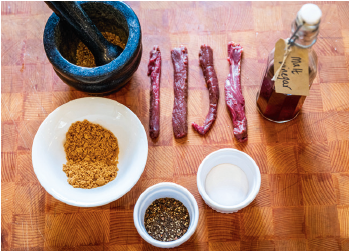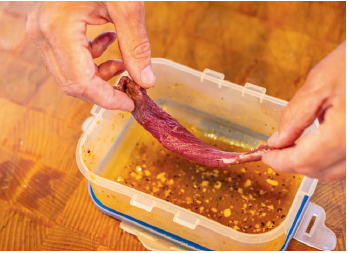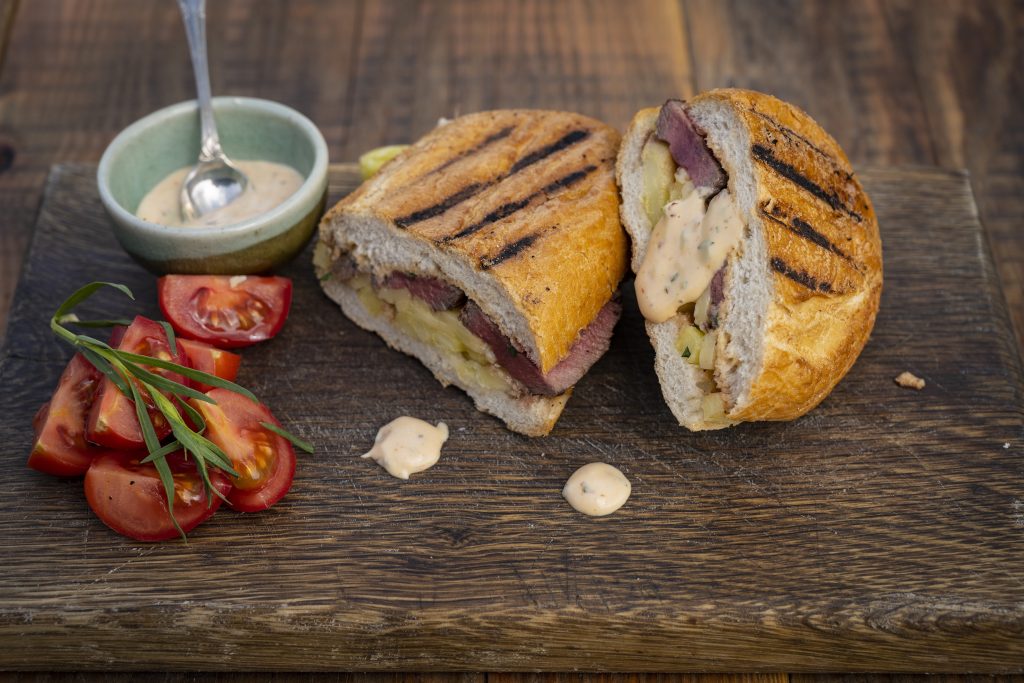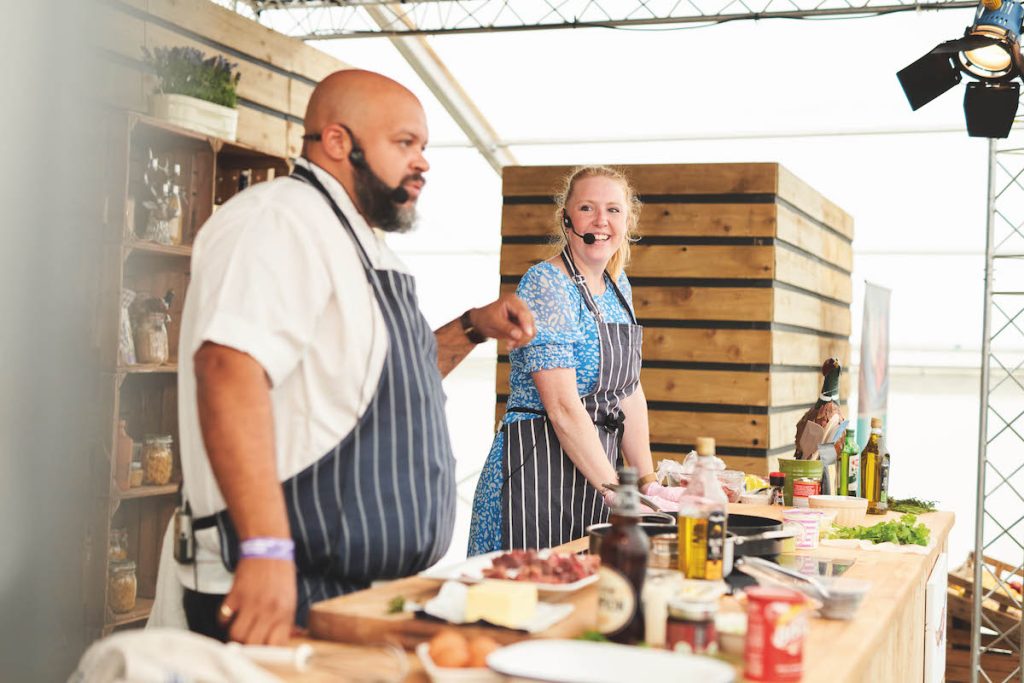Win CENS ProFlex DX5 earplugs worth £1,149 – enter here
A recipe for venison biltong
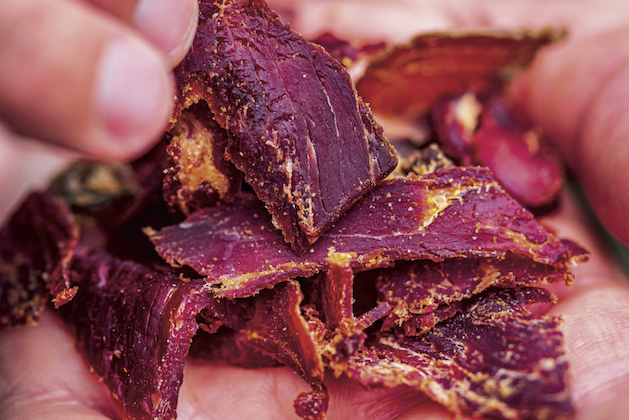
Venison is the perfect ingredient for making this field snack of venison biltong from South Africa. The lean, long grain strands of haunch lend themselves to the cured, bendy brittleness of biltong but, after a couple of challenging chews, it will start to soften, giving a peppery and herbal tang.
Dry curing reduces the moisture levels in fresh meat, which then acts as a preservative. By allowing it to dry so that it has lost at least 30% of its original raw weight it makes the product inhospitable to bad bacteria. This often takes weeks, particularly if it is done traditionally, but venison biltong can be ready to eat within a few days, especially if you help to accelerate the drying process.
In this recipe, the action of the cure happens within a few hours which not only is a quick and effective method but enhances the flavour as well. This recipe is for those chefs who like the stressless side of cooking as ultimately there is no cooking involved. Whether you are looking for an exciting alternative to your usual elevenses basket or a tasty snack in your pocket on a long walked-up day, this is the recipe for you.
Ingredients
- 500g of venison haunch (this will make approx six strips of biltong)
- 15g of good quality salt
- 15g soft dark brown sugar
- 10g of coriander seeds, lightly toasted and ground
- 10g of cracked black peppercorns
- 3 tbsp malt vinegar
Method
1. Prepare the venison by cutting strips following the grain. Your butcher would help with this. Your strips should be 1cm-2cm in thickness, but don’t worry if they vary — the thinner the strips the quicker they will dry. There won’t be much fat on the venison, but remove any as you go. You are looking for long, thin, lean strips.
2. In a bowl, mix all the other dry ingredients so they are evenly distributed. The salt in this cure mix is the agent that will remove the liquid, and the rest is for flavour.
3. Scatter half of the cure into a box or tray that is just big enough to t in the strips of venison so they are snug. You want to find a container that will be deep enough to retain the liquid from the meat without allowing it to spill. Place the strips on top of the cure, and scatter the remaining half on top.
4. Cover the meat evenly and massage in the cure so that every surface of the venison is covered. Now sprinkle the malt vinegar over the meat and allow it to cover each strip.
5. Cover the tray with cling film or put the lid on the container and place in the fridge. You can leave it in the cure overnight and there’s no need to turn the strips over or massage the meat — though you can if you want to.
6. After the allotted time of curing (6-8 hours), remove the container from the fridge, carefully take each strip and shake off any excess cure or liquid before placing them on a clean tea towel to pat dry.
7. At this point, you can hang the strips on a hook or string in a cool, dry and airy space. In summer, you might want to cover the strips with muslin to deter flies — I hang mine in my kitchen from an old laundry aerator. If you have a biltong box or dehydrator, pop the biltong in there. In the past, I’ve hung my biltong by the open door of my oven’s plate warmer overnight and this also works well.
8. The biltong will be ready after 7-10 days if air drying naturally or 3-5 days if using the accelerated method of a biltong box or dehydrator. It does not have a shelf life because it keeps drying. The dryer it gets the harder it is to chew, but some people like that and the challenge is always helped with a cold glass of beer.
Related Articles
Get the latest news delivered direct to your door
Subscribe to Shooting Times & Country
Discover the ultimate companion for field sports enthusiasts with Shooting Times & Country Magazine, the UK’s leading weekly publication that has been at the forefront of shooting culture since 1882. Subscribers gain access to expert tips, comprehensive gear reviews, seasonal advice and a vibrant community of like-minded shooters.
Save on shop price when you subscribe with weekly issues featuring in-depth articles on gundog training, exclusive member offers and access to the digital back issue library. A Shooting Times & Country subscription is more than a magazine, don’t just read about the countryside; immerse yourself in its most authoritative and engaging publication.






